#The John Rylands University Library
Explore tagged Tumblr posts
Text
Arches, The John Rylands University Library, Manchester, England
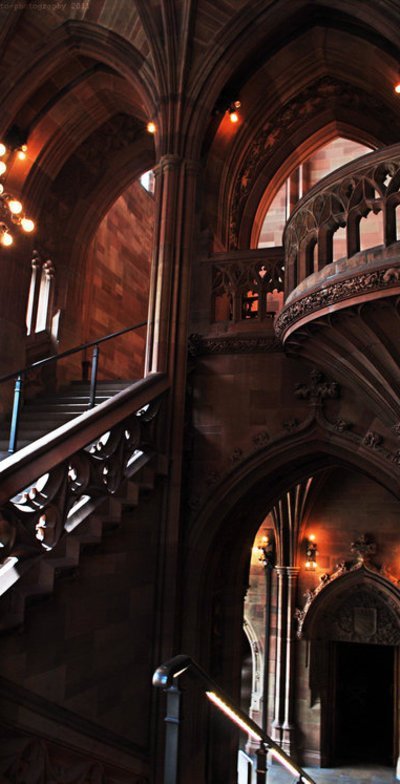
1 note
·
View note
Text
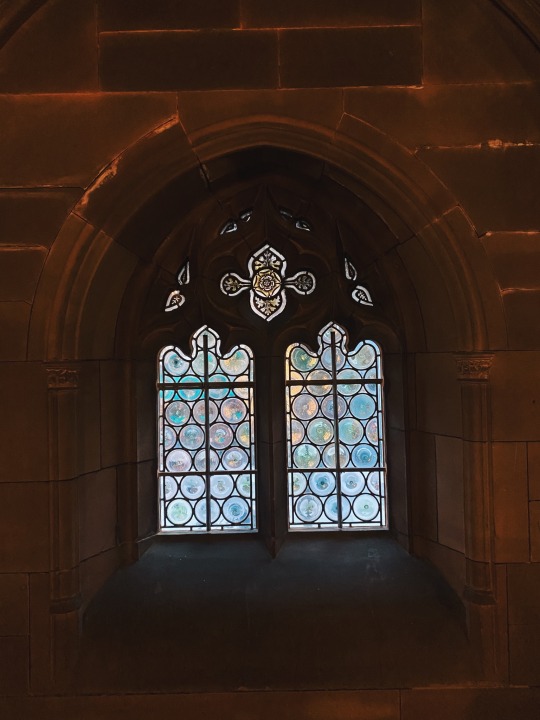
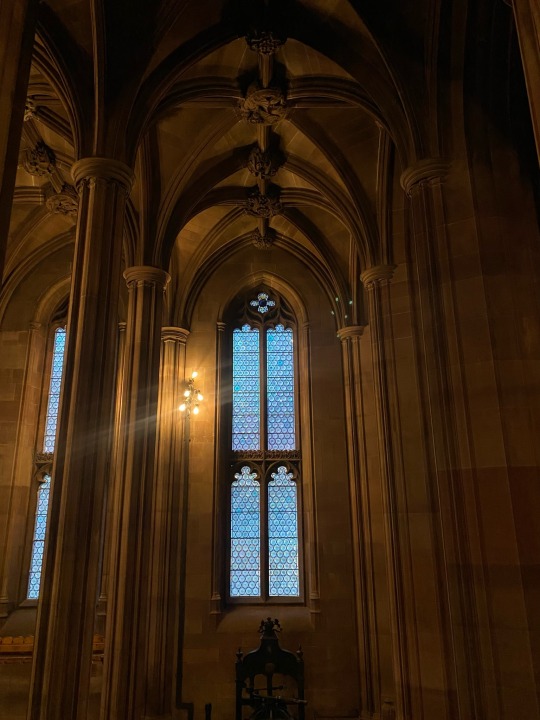
Windows in the John Rylands library 𖦹𖦹𖦹
#my photography#photography#stained glass#window#architecture#neo gothic#gothic revival#gothic architecture#church#library#mine#john rylands library#manchester#university of manchester#northern england#england#dark academia#dark acadamia aesthetic
167 notes
·
View notes
Text
Arches, The John Rylands University Library, Manchester, England

0 notes
Photo

Arches, The John Rylands University Library, Manchester, England
0 notes
Text
Today Crowley surprised Aziraphale by taking him on a road trip to the University of Manchester, where he had booked them a tour of the John Rylands Library. While they were there, Crowley paused time so that Aziraphale could freely peruse the rare books and old manuscripts (very carefully, of course). Aziraphale was practically buzzing with excitement the entire trip.
#good omens#aziracrow#aziraphale#crowley#ineffable husbands#ineffable boyfriends#ineffable lovers#meanwhile at the cottage#south downs cottage
338 notes
·
View notes
Text

a bird killing a serpent as an allegory for christ destroying satan
in the "rylands beautus" (beatus of liébana's commentary on the apocalypse of st john), latin illuminated manuscript, spain, late 12th or early 13th c.
source: Manchester, John Rylands University Library, Latin MS 8, fol. 14r
#medieval art#12th century#13th century#rylands beautus#beatus of liébana#bird#serpent#satan#medieval illumination#illuminated manuscript#christian iconography
146 notes
·
View notes
Text
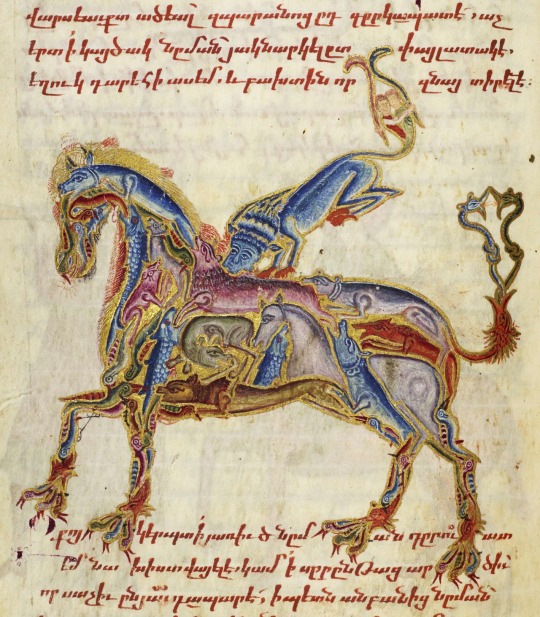
Bucephalus Armenian version of the Alexander Romance, Sulu Manastir 1544 Manchester, John Rylands University Library, Armenian MS 3, fol. 42v Via: https://www.facebook.com/photo/?fbid=2540644572768821&set=gm.1419952575268854&idorvanity=193169977947126
10 notes
·
View notes
Text

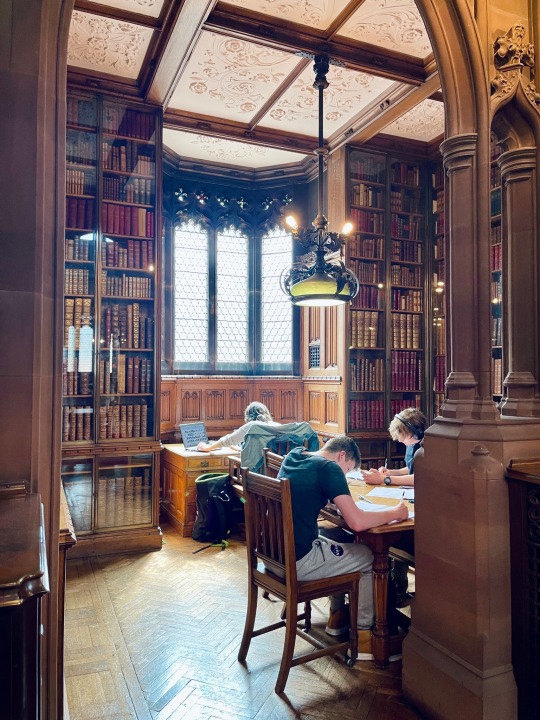



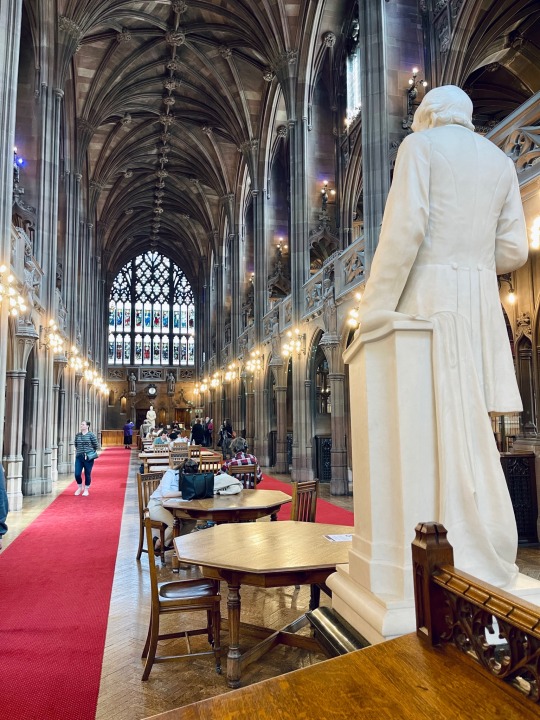
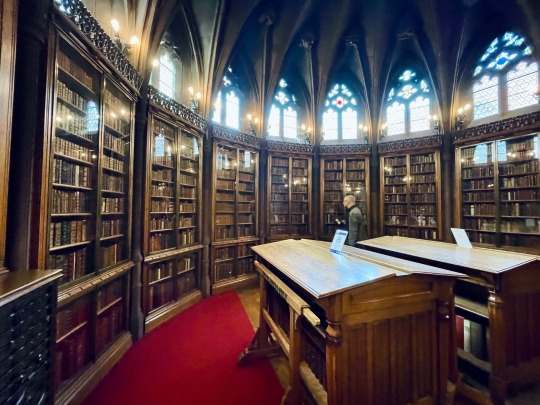


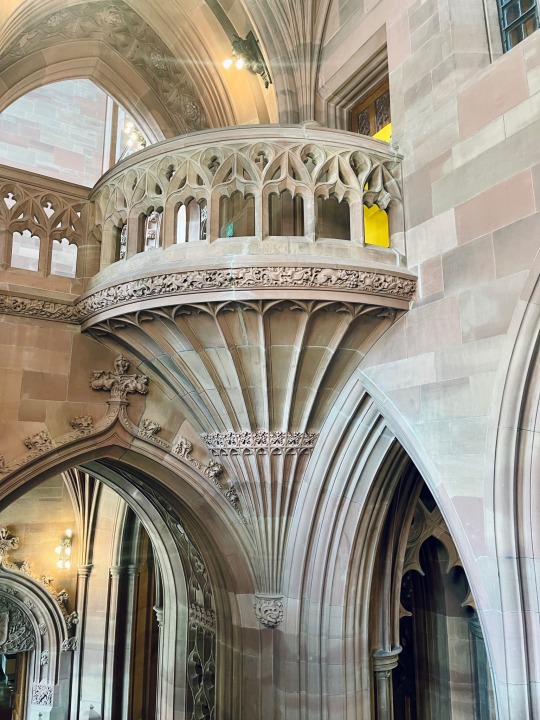
.
The gorgeous John Rylands Library.
NB founded by a woman but named after a man 🙄
The John Rylands Research Institute and Library is a late-Victorian neo-Gothic building. It is part of the University of Manchester. The library, which opened to the public in 1900, was founded by Enriqueta Augustina Rylands in memory of her husband, John Rylands. It became part of the university in 1972, and now houses the majority of the Special Collections of The University of Manchester Library, the third largest academic library in the United Kingdom.
The library, granted Grade I listed status in 1994, is maintained by the University of Manchester and open for library readers and visitors.
Enriqueta Rylands purchased a site on Deansgate for her memorial library in 1889 and commissioned a design from architect Basil Champneys. Mrs Rylands commissioned the Manchester academic Alice Cooke to index the vast library of the 2nd Earl Spencer which she had purchased and another collection of autographs. Mrs Rylands intended the library to be principally theological, and the building, which is a fine example of Victorian Gothic, has the appearance of a church, although the concept was of an Oxford college library on a larger scale
2 notes
·
View notes
Text

Bucephalus - Armenian version of the Alexander Romance, Sulu Monaster 1544. Manchester, John Rylands University Library, Armenian MS 3, fol. 42v - Պատմութիւն Աղեքսանդրի Մակեդոնացւոյ
0 notes
Text
John Rylands Library, Manchester
It is a late Victorian neo-Gothic building on Deansgate, part of University of Manchester. The architecture is truly something else–I could not stop taking pictures! The library was founded by Enriqueta Rylands, wife of John Rylands, in 1900. John Rylands was an entrepreneur, manufacturer and the first multi-millionaire in Manchester. Enriqueta opened the library in his memory after his death.…

View On WordPress
0 notes
Text




granjon arabesque?
john ryder titled a section of his A Suite of Fleurons [charles t. branford, boston, 1957, p21] «A Venetian Arabesque» believing first showing of an arabesque ornament with venetian printer gabriele giolito in 1552; the section opening displays monotype 280 as ryder believed it to be a recutting of this «giolito» ornament [2nd illustration]. ryder cites no source within his text, but his bibliography reveals that he probably got the notion from the seminal paper by francis meynell & stanley morison «Printers’ Flowers and Arabesques» [The Fleuron, vol. 1, 1923]. meynell & morison tell us: «A new Development took place (circa 1550) in Venice. Gabriel Giolito cut a small unit of type-ornament whose pattern may be observed in book-bindings of an earlier date, e.g. those of Grolier.»—their illustration no. 10. meynell & morsison in notes to no. 10 indicate «Venice, Giglio, 1552», but they do not cite a book; also indicated is the monotype recutting, & their no. 10 indeed seems exemplar for monotype 280. so, giolito, circa 1550 in the text, but giglio, 1552 in the notes. i spotted a similar ornament in the john rylands library on the title-page of Il Petrarca printed in 1551 [MDLI] by venetian printer domenico giglio [3rd & 4th illustrations] ¹: a year earlier than the meynell/morison attribution, indeed at venice, confirming giglio had a similar, though not the same, ornament. hendrik d.l. vervliet attributes this ornament to robert ganjon: it appears as no. 1 in his Granjon’s Flowers [oak knoll press, new castle (del), 2016, p23]—indeed, this may have been granjon’s first foray into arabesque. vervliet places first showing in the paris printing office of denis janot, 1544: parisian not venetian—vide ‹granjon’s first arabesque›. & under venice showings he cites the 1550 edition of boccacio’s Decamerone, printed by gabriele giolito—this must surely be the book erroneously alluded to by meynell/morison in Fleuron. vervliet further cites the meynell/morison giolito attribution for the asymetrical variant—presumably, as being superseded; & erroneously indicates that a matrix for the 1544 version is preserved at oxford university press [ibid., p24]. apparently, meynell, morison, & vervliet were unaware that they were looking at two like-though-not-the-same ornaments. monotype 280 is not a recutting of granjon no. 1, the 1544 janot ornament, but a copy more diagonally symmetrical [cp. 4th illustration]: the undoubted exemplar for monotype 280 is to be found in oxford university’s fell types, & is shown by stanley morison in his John Fell [at the clarendon press, oxford, 1967, p182]. here again morison erroneously cites venice, 1552—presumably with reference to the 1923 Fleuron article; & further notes: «Plantin had a matrix for this ornament sorting with the Colineus Cursive of Granjon as remodeled by Henri du Tour² in 1575.» if plantin had sorted the asymmetrical-variant matrix with the colineus cursive it is no longer to be found there.
who cut the original asymmetrical unit?
¹ with thanks to the john rylands library for permitting my examination of the giglio petrarca. ² hendrik van den keere.
for a composition using 280 vide ‹wardropism no. 2›; for a digital setting vide ‹typographical ex libris›.
#typography#arabesque#granjon#gabrielle giolito#domenico giglio#hendrik vervliet#john ryder#stanley morison#hendrik van den keere
0 notes
Text
Top 5 Places to Visit in Manchester, Europe
Manchester, a vibrant city in Europe, is renowned for its rich industrial heritage, bustling cultural scene, and impressive architectural landmarks. Whether you’re a history buff, a sports enthusiast, or simply looking for an exciting urban adventure, Manchester has something for everyone. Here are the top five places to visit in Manchester, Europe. And if you're planning your stay, you'll find plenty of charming Airbnbs in Manchester, Europe that offer the perfect home base for your explorations.
1. The Manchester Museum

Located on Oxford Road, The Manchester Museum is a must-visit for anyone interested in history, archaeology, and natural history. As part of the University of Manchester, the museum boasts an extensive collection of artifacts and exhibits. Highlights include a vast array of Egyptian mummies, dinosaur skeletons, and live reptiles and amphibians in the Vivarium. The museum is family-friendly and offers a variety of interactive displays and educational programs, making it an excellent destination for visitors of all ages.
2. The John Rylands Library

For book lovers and architecture aficionados, the John Rylands Library is a true gem. Opened in 1900, this neo-Gothic masterpiece is part of the University of Manchester and houses one of the world's finest collections of rare books and manuscripts. The library's stunning design, complete with intricate stained glass windows, vaulted ceilings, and ornate woodwork, is sure to leave a lasting impression. Don't miss the chance to see the original Gutenberg Bible and the collection of medieval illuminated manuscripts.
3. The Science and Industry Museum

Situated on the site of the world's first passenger railway station, the Science and Industry Museum is a testament to Manchester's pivotal role in the Industrial Revolution. The museum offers a fascinating insight into the city's industrial heritage, with exhibits on textile machinery, steam engines, and early computing. Interactive displays and live demonstrations make the experience engaging for visitors of all ages. The museum also hosts a variety of temporary exhibitions and events throughout the year, ensuring there's always something new to discover.
4. Manchester Art Gallery

Art enthusiasts will find plenty to admire at the Manchester Art Gallery. Located in the heart of the city, the gallery houses an impressive collection of over 25,000 works of art, spanning more than six centuries. The collection includes paintings, sculptures, ceramics, and textiles, with notable works by artists such as J.M.W. Turner, Dante Gabriel Rossetti, and L.S. Lowry. The gallery also features contemporary art exhibitions and offers a range of educational programs and workshops for visitors.
5. Old Trafford

No trip to Manchester would be complete without a visit to Old Trafford, the iconic home of Manchester United Football Club. Known as the "Theatre of Dreams," Old Trafford is one of the most famous football stadiums in the world. Visitors can take a guided tour of the stadium, exploring the players' tunnel, the pitch, and the museum, which houses a treasure trove of memorabilia from the club's storied history. For football fans, attending a match at Old Trafford is an unforgettable experience.
Where to Stay: Airbnbs in Manchester, Europe

When it comes to accommodation, Manchester offers a wide range of options, from luxury hotels to budget-friendly hostels. However, for a more personalized and homey experience, consider staying at one of the many Airbnbs in Manchester, Europe. Whether you're looking for a cozy apartment in the city center, a stylish loft in the Northern Quarter, or a spacious house in the suburbs, you'll find plenty of options to suit your needs and budget. Staying in an Airbnb allows you to live like a local, with the added benefit of having a comfortable and private space to relax after a day of sightseeing.
In conclusion, Manchester, Europe, is a city that seamlessly blends its rich history with modern-day attractions. From world-class museums and galleries to iconic sports venues and unique architectural landmarks, there are countless places to visit in Manchester. And with a variety of Airbnbs in Manchester, Europe, you'll have no trouble finding the perfect place to stay as you explore all that this dynamic city has to offer. So pack your bags and get ready to discover the many wonders of Manchester!
0 notes
Text
Manchester: A Fusion of Heritage, Culture, and Weather
Nestled in the heart of England, Manchester stands as a vibrant testament to resilience, innovation, and diversity. With a rich tapestry of history, a thriving cultural scene, and its ever-changing weather, this city has captivated the world's imagination for centuries.
A Glimpse into History:
Manchester's story is one of transformation. Originally a Roman settlement known as Mamucium, its history can be traced back over two millennia. However, it was during the Industrial Revolution that Manchester truly came into its own. The city became a powerhouse of cotton production, earning it the moniker "Cottonopolis." The legacy of this industrial boom is still visible in its iconic red-brick warehouses and mills, now repurposed into trendy apartments, offices, and cultural spaces.

Culture and Creativity:
Manchester's cultural scene is as diverse as its population. From world-class museums like the Manchester Museum and the Whitworth Art Gallery to cutting-edge contemporary art spaces like the Manchester Art Gallery, the city offers a wealth of artistic experiences. The Bridgewater Hall and the Royal Exchange Theatre showcase performances ranging from classical music to avant-garde theater, while the legendary nightlife scene, epitomized by venues like the Hacienda and the Warehouse Project, has made Manchester a mecca for music lovers.
The city's literary heritage is equally impressive, with renowned authors such as Elizabeth Gaskell, Anthony Burgess, and Carol Ann Duffy calling Manchester home. The University of Manchester's John Rylands Library houses rare manuscripts and literary treasures, attracting scholars and book lovers from around the globe.
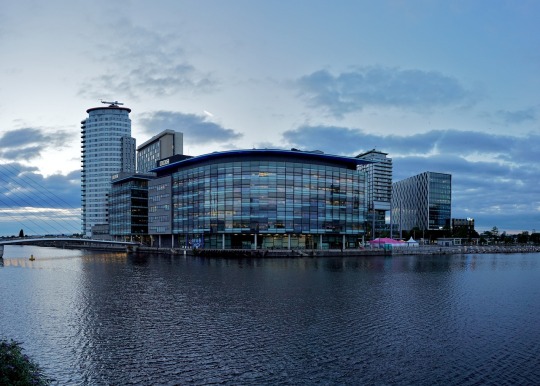
Weather:
Manchester's weather is famously unpredictable, with locals often joking that you can experience all four seasons in a single day. Situated in the northwest of England, the city is subject to the whims of the Atlantic weather systems, resulting in mild, damp winters and cool, breezy summers. Rain is a common occurrence throughout the year, contributing to the lush greenery that blankets the surrounding countryside.
While the weather may be changeable, it hasn't dampened the city's spirit. Mancunians are known for their resilience in the face of adversity, a trait that has been tested time and again, from the industrial hardships of the past to more recent challenges.
Looking to the Future:
As Manchester continues to evolve, it remains committed to preserving its heritage while embracing innovation and progress. The city's skyline is constantly evolving, with ambitious architectural projects like the Beetham Tower and the upcoming St. Michael's development reshaping its silhouette.

Moreover, Manchester's reputation as a hub for science and technology continues to grow, fueled by institutions like the University of Manchester and the Manchester Science Park. The city's thriving digital and creative industries are attracting talent from around the world, cementing its status as a global powerhouse of innovation.
Conclusion:
Manchester's history, culture, and weather are woven together to create a city unlike any other. From its industrial roots to its vibrant cultural scene, from its unpredictable skies to its unwavering spirit, Manchester embodies the essence of resilience, creativity, and diversity. As it looks to the future, the city remains a beacon of inspiration and possibility, inviting visitors to explore its past, engage with its present, and imagine what lies ahead.
1 note
·
View note
Photo
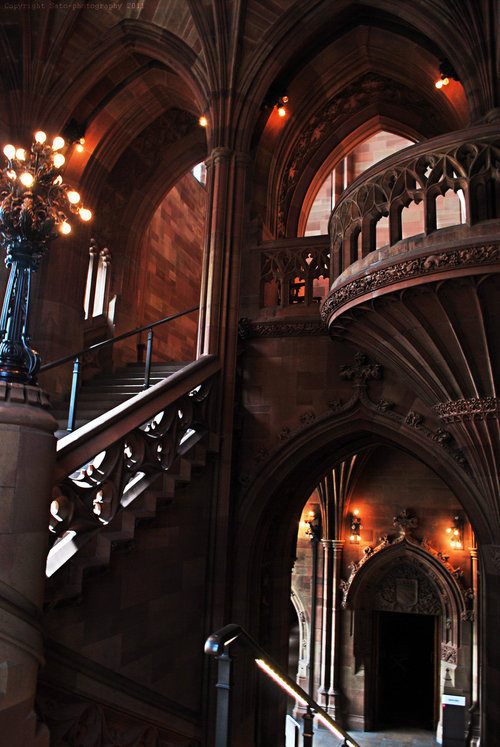
Arches, The John Rylands University Library, Manchester, England
12 notes
·
View notes
Photo
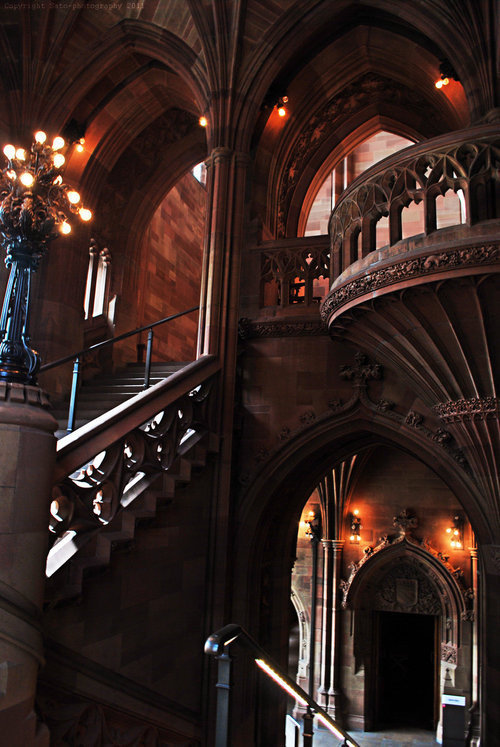
Arches, The John Rylands University Library, Manchester, England
2 notes
·
View notes
Photo

Arches, The John Rylands University Library, Manchester, England
0 notes